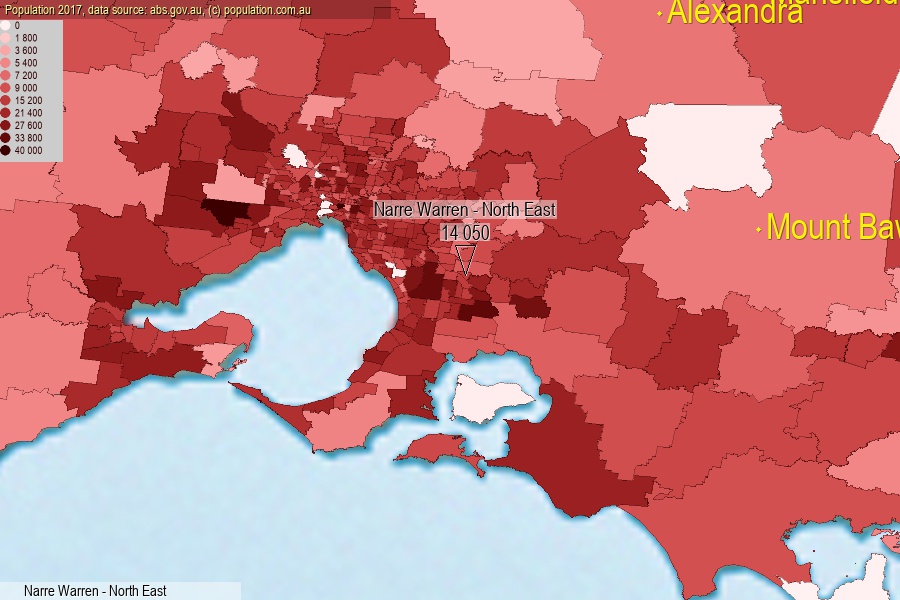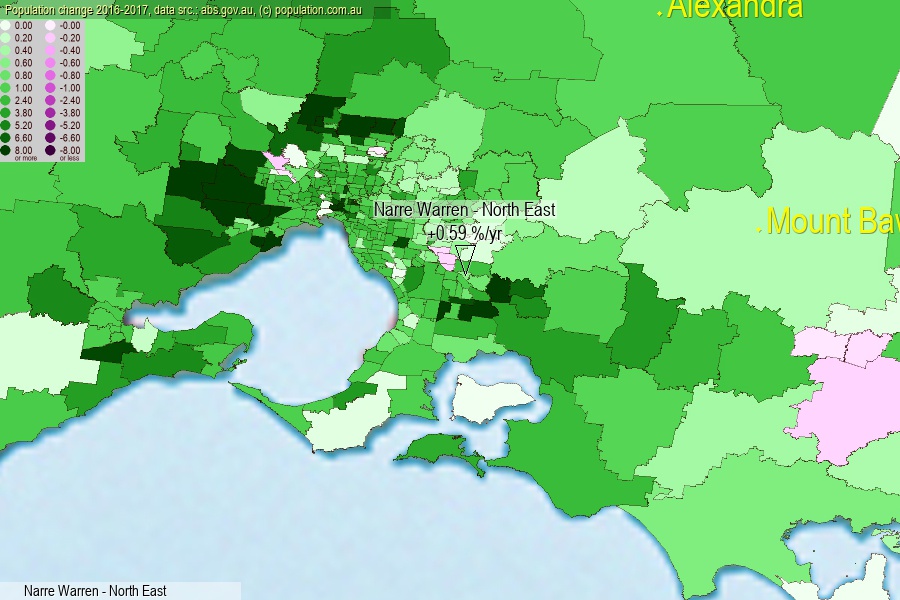 population.com.au
population.com.auLast official estimated population of Narre Warren - North East (as Statistical Area Level 2) was 14 050 people (on 2017-06-30)[2]. This was 0.06% of total Australian population and 0.219% of VIC population. Area of Narre Warren - North East is 4.90 km², in this year population density was 2 867.35 p/km² . If population growth rate would be same as in period 2016-2017 (+0.59%/yr), Narre Warren - North East population in 2025 would be 14 732. [0]



Click to enlarge. Narre Warren - North East is located in the center of the images.
Population [people], population density [p./km²] and population change [%/year] [2]
View borders » (new window) [4]
[2001-2002] +3.13 %/Yr.
[2002-2003] +2.02 %/Yr.
[2003-2004] +2.10 %/Yr.
[2004-2005] +0.53 %/Yr.
[2005-2006] +0.29 %/Yr.
[2006-2007] +0.65 %/Yr.
[2007-2008] +0.81 %/Yr.
[2008-2009] -0.17 %/Yr.
[2009-2010] -0.24 %/Yr.
[2010-2011] -0.30 %/Yr.
[2011-2012] +0.35 %/Yr.
[2012-2013] +0.48 %/Yr.
[2013-2014] +0.49 %/Yr.
[2014-2015] +0.38 %/Yr.
[2015-2016] +0.55 %/Yr.
[2016-2017] +0.59 %/Yr.
[0] Calculated with linear interpolation from officially estimated population
[1] Read more about SA2 and Australian Statistical Geography Standard (ASGS) on abs.gov.au
[2] Population data from Australian Bureau of Statistics (Population and density: 2017; change: 2016-2017)
[3] Digital Boundaries: Australian Statistical Geography Standard (ASGS) 2016.
[4] Border coordinates are simplifyed using Ramer-Douglas-Peucker algorithm.